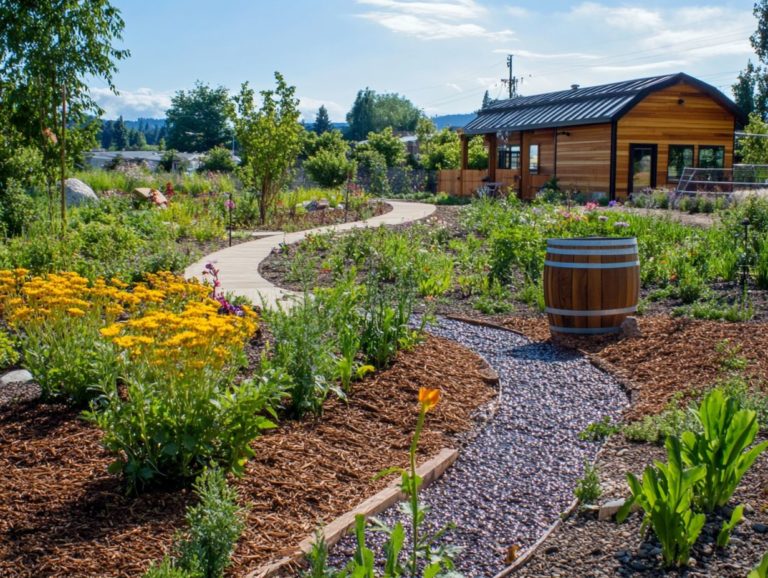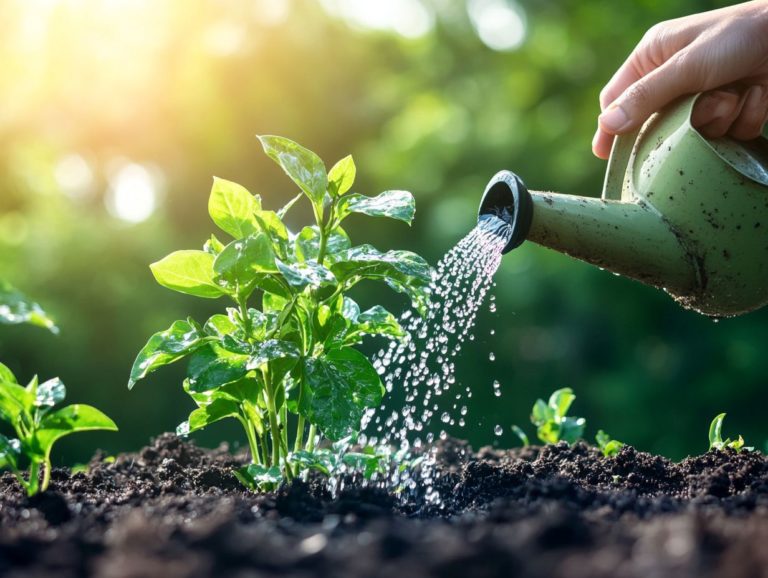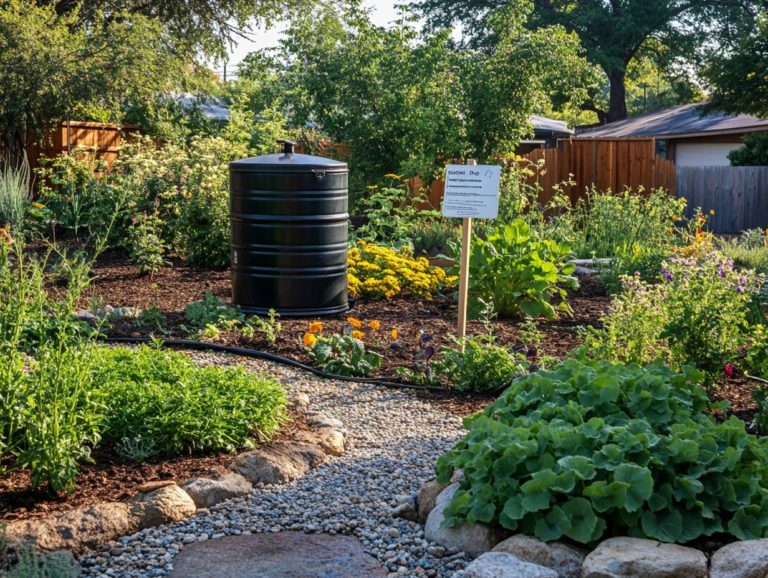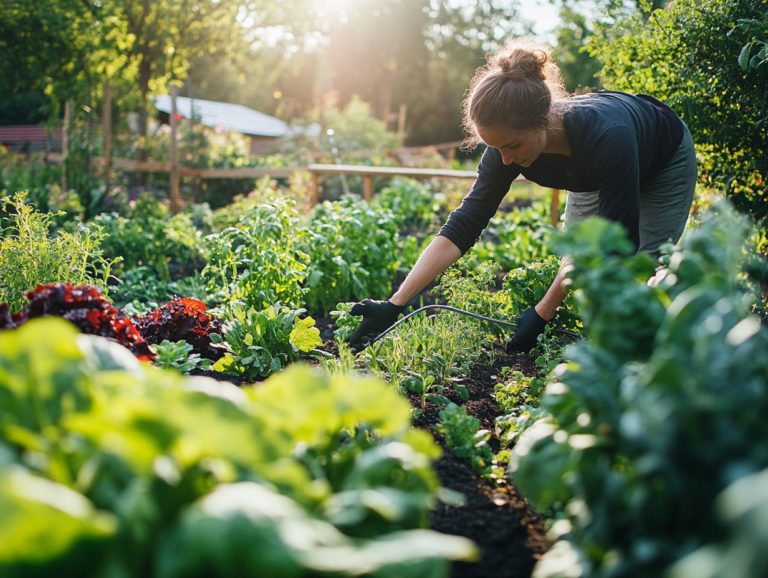5 Ways to Improve Your Soil’s Water Retention
Are you facing the challenge of dry, unyielding soil that simply won’t hold moisture? Enhancing your soil’s water retention can revolutionize your garden or farm, resulting in healthier plants and increased yields.
Consider these five effective strategies to improve your soil’s ability to retain water, ranging from incorporating organic matter to utilizing mulch and cover crops. You’ll also explore vital factors like soil composition and common pitfalls to avoid.
Delve into these insights to cultivate a thriving, moisture-retentive environment for your plants!
Contents
- Key Takeaways:
- 1. Add Organic Matter to Your Soil
- 2. Use Mulch to Cover the Soil
- 3. Plant Cover Crops
- 4. Avoid Over-Tilling the Soil
- 5. Use Drip Irrigation
- What Factors Affect Soil Water Retention?
- What Are the Benefits of Improving Soil Water Retention?
- What Are the Different Types of Mulch and Which Is Best for Water Retention?
- How Can Cover Crops Improve Soil Water Retention?
- What Are Some Common Mistakes to Avoid When Trying to Improve Soil Water Retention?
- Frequently Asked Questions
- What are some ways to improve soil’s water retention?
- Why is Water Retention Important for Soil?
- How Can Mulching Improve Soil’s Water Retention?
- What Types of Organic Matter are Best for Improving Soil’s Water Retention?
- Are There Any Drawbacks to Improving Soil’s Water Retention?
- Can Improving Soil’s Water Retention Also Benefit the Environment?
Key Takeaways:
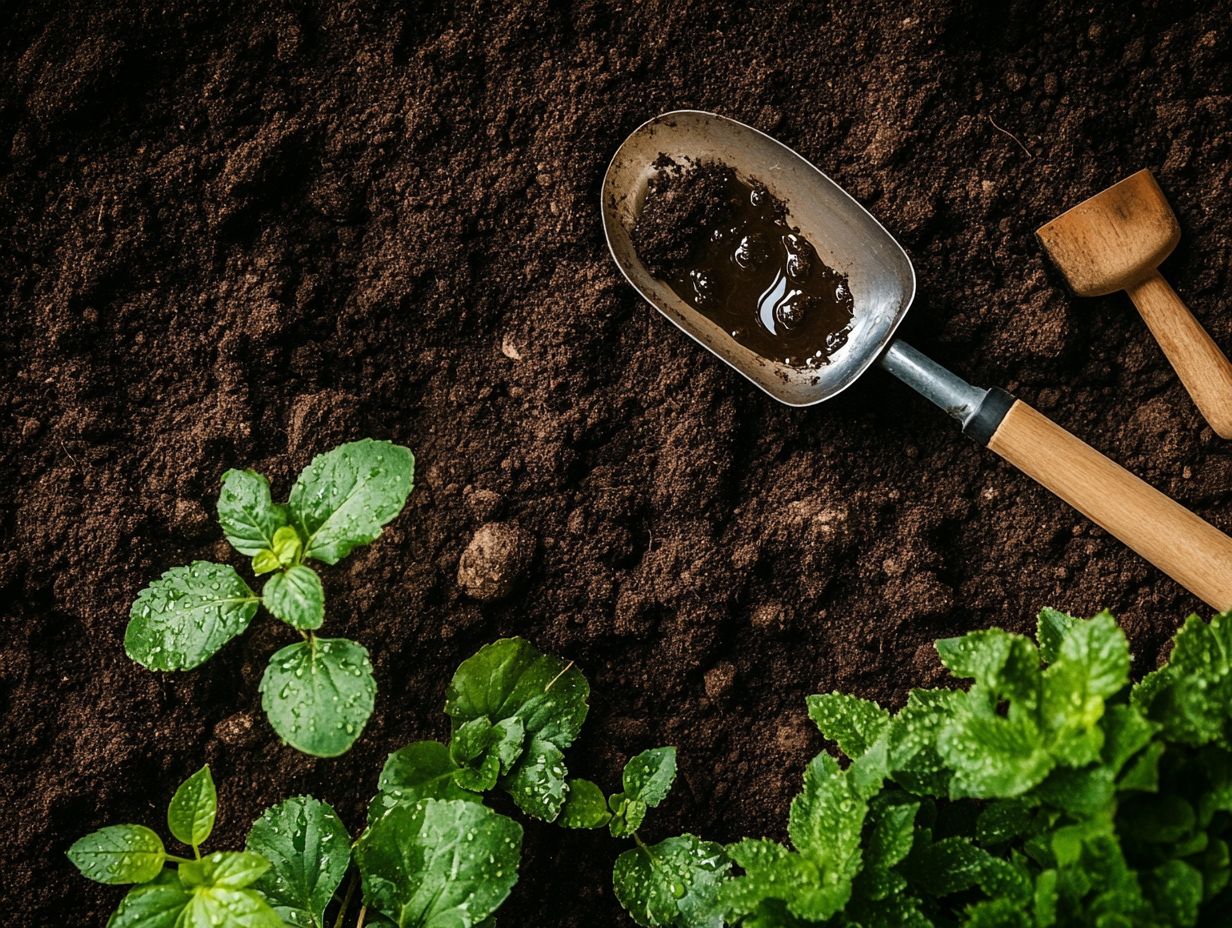
- Adding organic matter to your soil improves its water retention, allowing plants to thrive even in dry conditions.
- Mulching the soil helps retain moisture and reduces evaporation, making it a simple yet effective way to enhance water retention.
- Planting cover crops improves soil structure and increases water holding capacity, making it a valuable tool for maintaining moisture in the soil.
1. Add Organic Matter to Your Soil
Adding organic matter to your soil is essential for enhancing its health and fertility. It transforms the soil structure, boosts nutrient absorption, and nurtures a vibrant ecosystem teeming with beneficial microorganisms, including a type of fungus that helps plants absorb water and nutrients.
By incorporating materials such as compost and worm castings, you elevate the organic content and improve water retention critical for maintaining optimal moisture levels in your garden.
These amazing amendments will supercharge your soil with nutrients that plants can readily access, fostering vigorous growth. Take compost, for example; crafted from decomposed organic materials, it enriches the soil with vital elements like nitrogen, phosphorus, and potassium. Worm castings provide essential micronutrients and beneficial microbes.
The fungi that form symbiotic relationships with plant roots are particularly impactful. They extend root networks and enhance nutrient and water uptake, equipping your plants to withstand stressors and cultivating a healthier and more productive garden environment.
2. Use Mulch to Cover the Soil
Applying mulch is a highly effective strategy for covering your soil. It helps retain moisture, regulates water content, and provides excellent weed control, fostering a healthier environment for your plants.
Mulching comes in various forms, each offering unique benefits for soil health. Organic mulches, such as shredded bark or straw, enrich your soil as they decompose, enhancing its structure and nutrient content. Inorganic mulches like gravel or rubber provide long-lasting coverage and excel in moisture retention.
Utilizing mulch significantly reduces your watering needs and keeps pesky weeds at bay, promoting a thriving ecosystem in your garden. Integrating ground cover plants like creeping thyme or sedum with mulch enhances soil stability and aesthetics, resulting in a lush and resilient landscape.
3. Plant Cover Crops
Planting cover crops is an incredibly beneficial practice that enriches your soil health by adding organic matter, improving water retention, and enhancing nutrient absorption while effectively preventing soil erosion and suppressing weeds.
These versatile plants such as legumes, grains, and brassicas are chosen based on your specific soil types and local climate to maximize their positive impact. For example, in sandy soils, certain cover crops can significantly boost moisture retention, whereas in clay-rich areas, they can enhance drainage and improve soil structure.
The diverse root systems of cover crops play a crucial role in increasing organic matter levels, creating a thriving ecosystem that nurtures beneficial microorganisms. This supports your current crops and establishes a foundation for sustainable farming practices, equipping you to tackle challenges posed by climate variability with confidence.
4. Avoid Over-Tilling the Soil
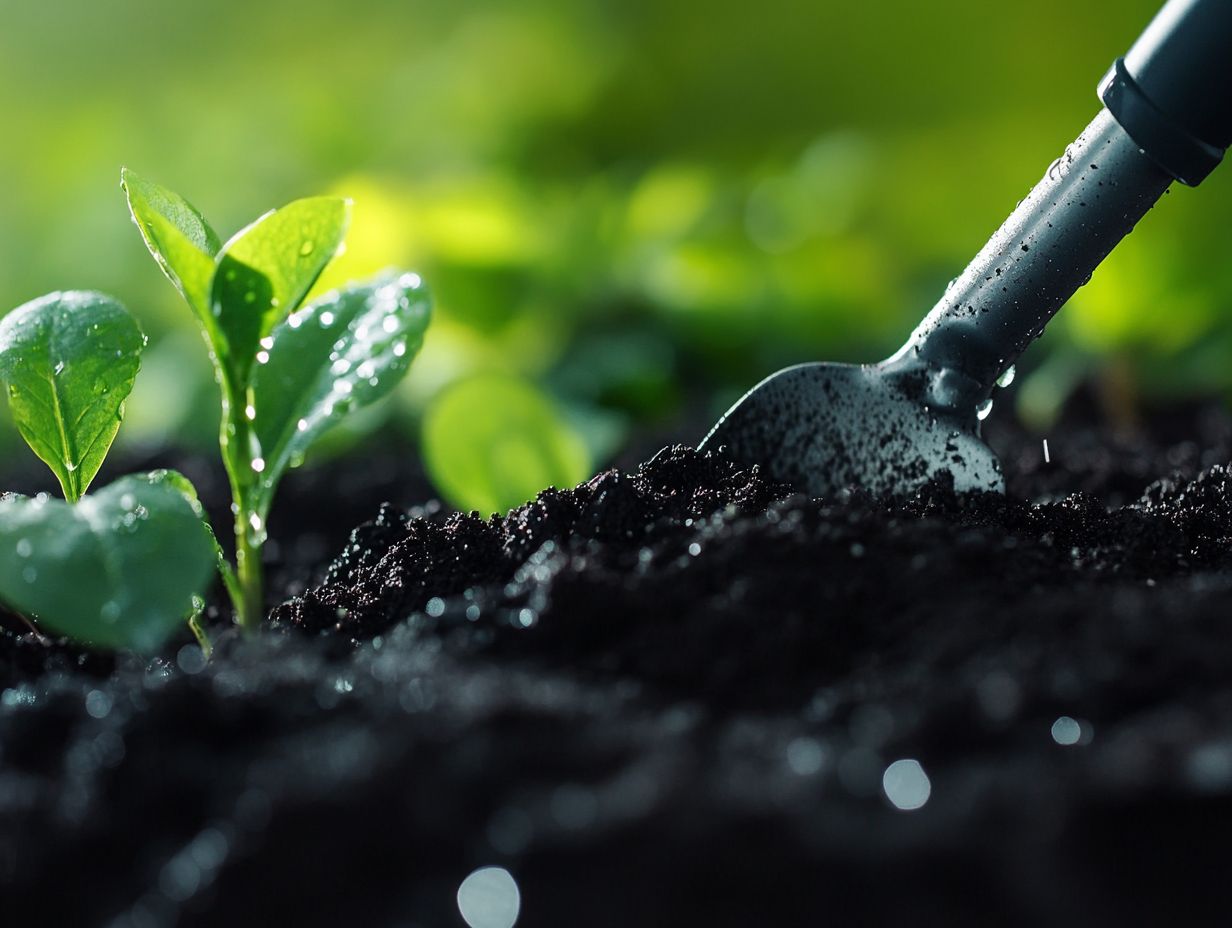
Avoiding over-tilling your soil is crucial for maintaining its health. Excessive tillage can disrupt the soil structure and harm beneficial organisms like mycorrhizae, which are fungi that help plants grow. This leads to a reduction in moisture content.
When the delicate balance of soil ecosystems is disturbed, fertility and overall productivity decline. Over-tilling creates compacted layers that restrict root growth and water infiltration, making moisture loss worse and negatively impacting your crop yields.
To tackle this issue, consider best practices like no-till or reduced tillage methods. Techniques such as incorporating cover crops, practicing crop rotation, and utilizing organic mulch not only promote biodiversity but also enhance moisture retention.
Act now to nurture your soil, ensuring its viability for future generations.
5. Use Drip Irrigation
Utilizing drip irrigation is an exceptionally efficient way to deliver water directly to the plant roots. This method ensures optimal moisture levels while enhancing soil water retention and minimizing water wastage.
This irrigation technique is particularly advantageous for various soil types. It enables effective management of your water resources no matter the landscape challenges you face. By facilitating precise irrigation scheduling, it guarantees that your plants receive the ideal amount of water at the right moment an essential factor for their healthy growth.
Drip irrigation helps maintain consistent moisture levels in the soil, promotes robust root development, and significantly reduces the likelihood of plant stress caused by drought or overwatering.
What Factors Affect Soil Water Retention?
Several factors significantly influence soil water retention, including soil type, organic matter content, and the presence of amendments like biochar and superabsorbent polymers. These elements work together to enhance the soil’s capacity to retain moisture and nutrients.
Understanding the delicate balance of these components is essential for optimizing soil health. For instance, soil texture plays a pivotal role in determining pore size, which directly affects the rate at which water is absorbed or lost. Soils enriched with organic matter boost water retention and foster microbial life, which is crucial for nutrient cycling.
Materials like biochar create a porous framework that retains moisture while facilitating aeration. Likewise, superabsorbent polymers absorb and release water as needed, making them particularly valuable in arid regions where conserving water is critical. These factors contribute to more resilient agricultural practices and healthier ecosystems.
How Does Soil Composition Affect Water Retention?
Soil composition is crucial in determining how well water is retained. Different soil types, like sandy soil, have a lower moisture retention capacity compared to loamy or clay soils, which excel at holding water.
The distinct textures of sand, silt, and clay each bring unique characteristics that can directly influence your gardening success. For example, sandy soil drains water quickly, making it challenging to maintain adequate moisture levels for plants that thrive in damp conditions. Conversely, clay soil creates a dense environment that can lead to waterlogging, complicating root growth.
Loamy soil, often hailed as the gardening holy grail, achieves a harmonious balance with its blend of sand, silt, and clay. This allows for improved drainage while still retaining moisture. Understanding these differences is essential for gardeners who want to implement effective moisture management strategies tailored to their specific soil types.
What Are the Benefits of Improving Soil Water Retention?
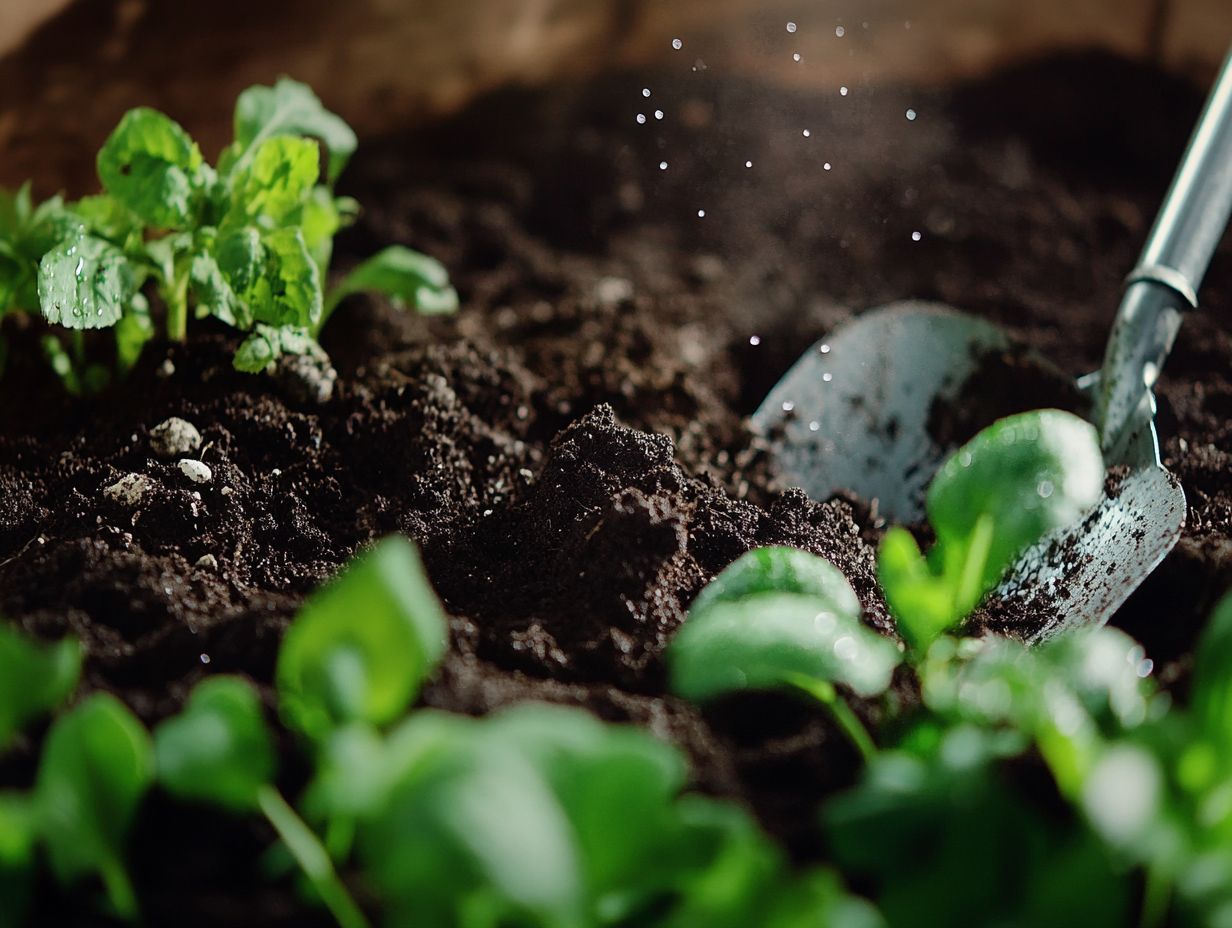
Want to make your garden flourish? Improving soil water retention is your key! Enhancing soil water retention brings a wealth of benefits that you ll appreciate, including richer moisture content for your plants and enhanced nutrient absorption.
This leads to gardens that are not just more resilient but also far more productive. By creating a moisture-rich environment, you can significantly cut down on your irrigation needs, saving both time and resources while ensuring that your plants truly thrive.
Healthier plants will be more vigorous and better prepared to tackle a variety of stresses, including drought conditions. To unlock these advantages, consider incorporating organic matter like compost into your soil. This practice will vastly enhance its structure and water-holding capacity.
Mulching helps retain moisture at the surface, strengthening your garden’s resilience. These practices not only foster lush growth but also align with sustainable gardening methods, nurturing a thriving ecosystem that benefits both you and your environment.
What Are the Different Types of Mulch and Which Is Best for Water Retention?
You have a variety of mulch types at your disposal, including organic materials like peat moss and coconut coir, each bringing its own benefits in terms of water retention, soil health, and weed control.
Organic mulch is particularly advantageous; it retains moisture and decomposes over time, enriching your soil with essential nutrients that your plants will thrive on. In contrast, inorganic mulches like gravel and rubber offer long-lasting coverage and are perfect for areas where aesthetics and durability take precedence.
When selecting the best mulch for your needs, it’s crucial to consider the specific requirements of your soil and the plants you re cultivating. Certain types can significantly enhance moisture retention, especially based on local climate conditions and plant preferences.
How Can Cover Crops Improve Soil Water Retention?
Cover crops present a smart approach for enhancing soil water retention, primarily by boosting organic matter levels. This enhancement leads to improved moisture retention and nutrient absorption for your subsequent plantings.
These resilient plants serve as a protective shield for your soil, mitigating erosion and compaction while fostering healthy microbial activity within the soil ecosystem. Choose from exciting options like clover, rye, or mustard, each offering distinct advantages in nitrogen fixation the process where certain plants help add nutrients back into the soil or weed suppression.
By thoughtfully incorporating the right cover crops into your farming practices, you significantly elevate overall soil health, thereby enhancing water retention capabilities. This not only supports your crops during dry spells but also contributes to improved yields and resilience against adverse weather conditions.
What Are Some Common Mistakes to Avoid When Trying to Improve Soil Water Retention?
When you set out to improve soil water retention, it’s crucial to steer clear of common pitfalls like over-tilling, which disrupts the delicate soil structure, and poor irrigation scheduling that can cause moisture fluctuations.
Many gardeners unknowingly undermine their soil s ability to retain water by overlooking the significance of organic matter. By incorporating compost, you not only boost nutrient availability but also enhance soil texture, nurturing a robust ecosystem.
Implementing efficient watering techniques is key; deep, infrequent watering encourages roots to extend further into the soil, promoting both stability and moisture retention. It’s wise to monitor weather patterns and adjust your irrigation strategy accordingly, as rigid schedules might not always align with nature’s rhythm.
By being attentive to these practices, you can cultivate a thriving environment that maximizes water retention while minimizing waste.
Frequently Asked Questions
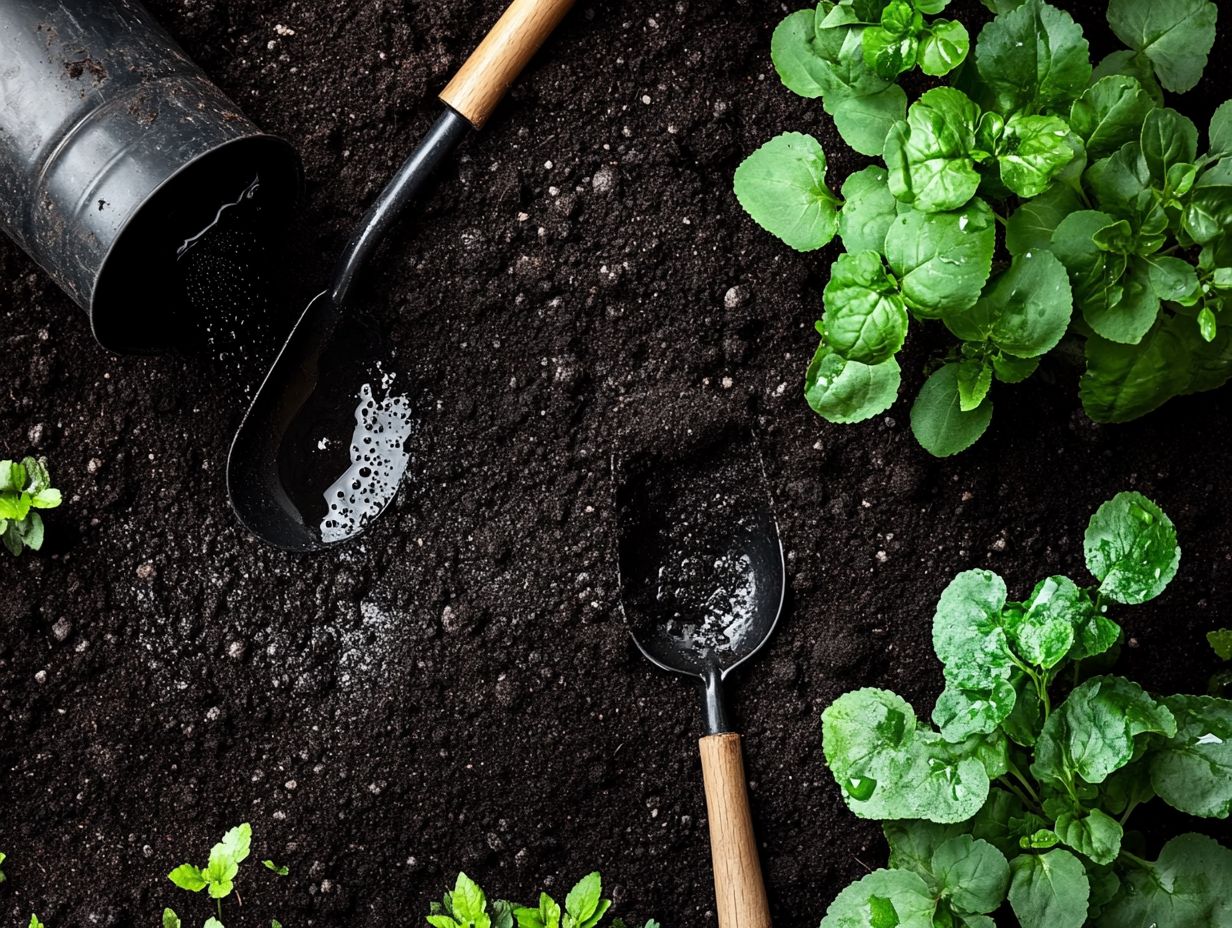
What are some ways to improve soil’s water retention?
1. Mulching: Adding a layer of organic mulch on top of the soil helps retain moisture. It also prevents quick evaporation.
2. Composting: Mixing compost into the soil increases its water-holding capacity and provides essential nutrients for plants.
3. Using Cover Crops: Plant cover crops to boost soil structure and enhance water retention.
4. Adding Organic Matter: Incorporate materials like compost or manure into the soil. These improve its moisture-holding ability.
5. Using Irrigation Methods: Opt for drip irrigation or soaker hoses instead of sprinklers. These methods deliver water directly to the soil, reducing evaporation.
Why is Water Retention Important for Soil?
Water retention allows plants to access water more efficiently. It also prevents soil erosion and nutrient loss.
How Can Mulching Improve Soil’s Water Retention?
Mulching forms a protective layer that reduces evaporation. It also helps maintain soil temperature and limits weed growth, giving plants better access to water.
What Types of Organic Matter are Best for Improving Soil’s Water Retention?
Compost, manure, and leaf litter are excellent choices. They enhance the tiny spaces in the soil that hold moisture, making it easier for plants to absorb water.
Are There Any Drawbacks to Improving Soil’s Water Retention?
Improving soil’s water retention has many advantages. However, over-saturation can cause root rot and other plant issues, so monitor moisture levels carefully.
Can Improving Soil’s Water Retention Also Benefit the Environment?
Yes, enhancing soil’s water retention reduces runoff and erosion. This prevents pollutants from entering waterways and promotes biodiversity and soil health, contributing to a healthier ecosystem.



